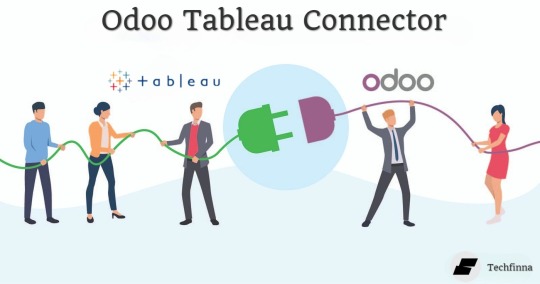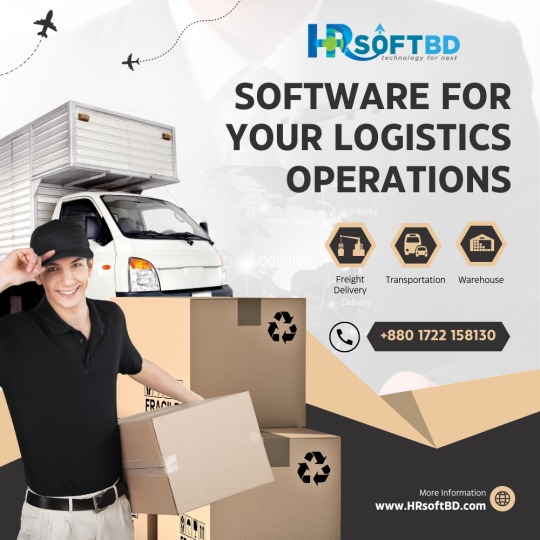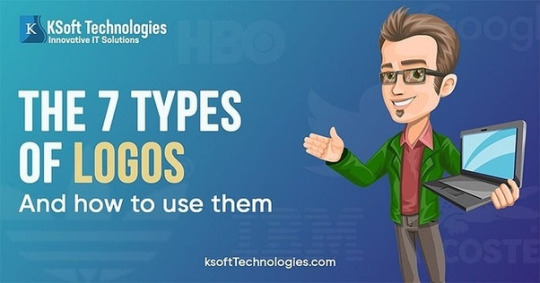#ERP Development Service
Explore tagged Tumblr posts
Text
Connect Odoo with Tableau Desktop

The Techfinna Odoo Tableau Connector is a integration tool that connects Odoo with Tableau, enabling real-time data extraction and visualization. With features like custom table selection, automatic schema detection, and support for live data refresh, it simplifies the process of creating dynamic dashboards and reports. This connector empowers businesses to unlock deeper insights and make data-driven decisions efficiently.
#odoo #odooerp #odoosoftware #odoomodule #crm #accounting #salesforce #connector #integration #odoo18 #odoo17 #microsoft #powerbi #desktop #odoo services#odooimplementation#google#odoo development company#odoo crm#microsoft#odoo erp#odoo#good omens
#odoo erp#odoo18#odooimplementation#odoo development company#odoo services#analytics#innovation#cybersecurity#tableau#advanced#odoo#business
8 notes
·
View notes
Text

Courier Service Management Software by @hrsoftbd Bangladesh
#mobile app design bd#mobile app development bd#accounting software bd#accounting software development bd#advocate dairy management bd#website desing bd#website development bd#omr solution bd#omr development bd#Courier service management software bd#doamin and hosting bd#bulk sms bd#prescription software bd#e-commerce solution bd#online education system bd#spa management software bd#parlor management software bd#ballot counting software bd#dairy farm software bd#shop management software bd#invoice software development bd#salon management software bd#ERP solution bd#vehicle manageent bd#Coaching Management Software bd#hrsoftbd
4 notes
·
View notes
Text

Mobile App Development from HRsoft Bangladesh
#mobile app design bd#mobile app development bd#accounting software bd#accounting software development bd#advocate dairy management bd#website desing bd#website development bd#omr solution bd#omr development bd#Courier service management software bd#doamin and hosting bd#bulk sms bd#prescription software bd#e-commerce solution bd#online education system bd#spa management software bd#parlor management software bd#ballot counting software bd#dairy farm software bd#shop management software bd#invoice software development bd#salon management software bd#ERP solution bd#vehicle manageent bd#Coaching Management Software bd#hrsoftbd
2 notes
·
View notes
Text

fingerprint scanner software by @hrsoftbd
visit:
#mobile app design bd#mobile app development bd#accounting software bd#accounting software development bd#advocate dairy management bd#website desing bd#website development bd#omr solution bd#omr development bd#Courier service management software bd#doamin and hosting bd#bulk sms bd#prescription software bd#e-commerce solution bd#online education system bd#spa management software bd#parlor management software bd#ballot counting software bd#dairy farm software bd#shop management software bd#invoice software development bd#salon management software bd#ERP solution bd#vehicle manageent bd#Coaching Management Software bd#hrsoftbd
2 notes
·
View notes
Text

#custom erp#flutter mobile development#web and mobile app development company#app development services#erp development#digital consulting#ecommerce website development company
3 notes
·
View notes
Text
Online Classified Ads: A Classic Example of C2C E-Commerce
The Power of Online Classified Ads in C2C E-Commerce

In today’s digital era, e-commerce has redefined how individuals and businesses interact, creating seamless connections between buyers and sellers. A shining example of this transformation is the rise of C2C (Consumer-to-Consumer) e-commerce, with online classified ads leading the charge. Platforms like Craigslist, OLX, and Facebook Marketplace have revolutionized the traditional marketplace by making transactions faster, more convenient, and globally accessible.
Let’s explore how online classified ads exemplify C2C e-commerce, the technology behind their success, and the significant role they play in shaping the digital economy.
What is C2C E-Commerce?
C2C e-commerce, or consumer-to-consumer electronic commerce, facilitates direct transactions between individual buyers and sellers using third-party platforms. Unlike B2C (Business-to-Consumer) or B2B (Business-to-Business) models, C2C focuses entirely on connecting consumers for transactions without a middleman business.
Online classified ads are the backbone of C2C e-commerce, acting as digital hubs where users list products and services for sale. Other users can then browse, negotiate, and purchase directly from the seller.
Why Online Classified Ads Are Ideal for C2C E-Commerce
1. Direct Consumer Interaction Classified platforms prioritize direct communication between buyers and sellers. This immediate interaction fosters trust and simplifies decision-making, making transactions quicker and more personal.
2. Low or Zero Transaction Costs Most platforms allow users to post ads for free or charge minimal fees. This affordability encourages individuals to sell items and services, creating a thriving marketplace.
3. Diverse Offerings From second-hand furniture and electronics to rental properties and job postings, online classifieds cover a broad spectrum of categories, catering to a wide range of consumer needs.
4. Global and Local Reach Users can choose between targeting local buyers for quick sales or reaching a global audience for niche products, making these platforms highly versatile.
5. User-Friendly Platforms Designed to be simple and intuitive, classified sites are accessible to users of all skill levels, enabling easy posting, browsing, and communication.
The Technology Behind Online Classified Platforms
The success of online classified ads lies in the sophisticated technologies powering these platforms:
Advanced Search Algorithms: These ensure users quickly find relevant listings based on location, category, and price.
Secure Payment Gateways: Many platforms integrate secure payment options to safeguard transactions.
Responsive Web Design: Classified platforms are optimized for mobile devices, ensuring consistent user experiences across screens.
AI-Powered Recommendations: Artificial intelligence offers personalized suggestions based on user preferences and browsing behavior.
SEO and Analytics: Platforms leverage SEO to boost the visibility of listings on search engines and use analytics to understand and enhance user engagement.
Benefits of Online Classified Ads in C2C E-Commerce
1. Empowering Small Sellers Classified ads provide a level playing field for individuals and small businesses to reach buyers without requiring a physical storefront.
2. Promoting Sustainability By encouraging the resale of second-hand goods, these platforms reduce waste and contribute to a circular economy.
3. Faster Transactions With features like instant messaging and real-time notifications, classified platforms streamline communication and accelerate deals.
4. Cost-Effective Marketing Sellers can create impactful ads with photos and detailed descriptions without needing expensive marketing campaigns.
Challenges in C2C E-Commerce via Classified Ads
Despite their advantages, online classifieds face challenges:
Trust Issues: Buyers may worry about product quality, payment security, or fraudulent listings.
Minimal Regulation: Without strict oversight, issues like spam, counterfeit goods, and misleading ads may arise.
High Competition: The abundance of listings can make it hard for sellers to stand out without investing in premium placements.
Logistics: Delivery is often left to buyers and sellers, complicating transactions for bulky or long-distance items.
How Online Classified Ads Drive C2C E-Commerce Growth
Despite these obstacles, classified platforms remain pivotal in the growth of C2C e-commerce for several reasons:
Democratization of Commerce: They empower anyone with internet access to participate in the marketplace.
Innovative Monetization: Features like promoted ads and premium listings offer additional value to users while generating revenue for platforms.
Community Building: By fostering local transactions and encouraging user feedback, classified platforms create engaged communities.
Optimizing Classified Listings with SEO
For sellers, SEO (Search Engine Optimization) is essential to boost visibility on classified platforms. Including relevant keywords like “buy and sell locally,” “best deals online,” or “affordable used goods” can significantly enhance listing performance.
Companies like KSoft Technologies specialize in web development, SEO strategies, and digital marketing, helping classified platforms and individual sellers achieve:
Higher rankings on search engines.
Enhanced user interfaces for better engagement.
Scalable and secure technology solutions.
The Future of Online Classified Ads in C2C E-Commerce
The future of online classifieds is bright, with innovations in AI, blockchain, and logistics solutions promising to address current challenges. These advancements can enhance trust, security, and overall user experiences, ensuring the continued growth of C2C e-commerce.
As technology evolves, businesses offering web development, mobile app development, and SEO services, such as KSoft Technologies, will play a vital role in empowering classified platforms to stay competitive and innovative.
Conclusion
Online classified ads are a cornerstone of C2C e-commerce, creating spaces for direct consumer interaction, affordable transactions, and sustainable commerce. By connecting buyers and sellers without traditional barriers, these platforms exemplify the potential of technology-driven marketplaces.
Whether you're looking to improve your classified platform or enhance your digital presence, KSoft Technologies offers cutting-edge solutions in web development, mobile app creation, and SEO strategies to help you thrive.
Visit KSoft Technologies today and discover how we can help elevate your business in the evolving digital economy! 🚀
#business to business#ecommerce#branding#artificial intelligence#web design#web development#seo services#techinnovation#economy#erp software#entrepreneur#adobe#technews#computer#technology
3 notes
·
View notes
Text
Microsoft Dynamics 365 Finance & Operations Partner | D365 Finance Software | JRS Dynamics Info Solutions
Streamline your financial and operational processes with Microsoft Dynamics 365 Finance & Operations, delivered by JRS Dynamics – a trusted D365 consultant in India and USA!
Why Choose JRS Dynamics for Dynamics 365 Finance?
✅ Expert Implementation ✅ Comprehensive Consulting & Support ✅ Global Reach ✅ Industry-Specific Customizations
Empower your business with advanced financial tools, real-time analytics, and streamlined operations.
Learn more about our services at: https://jrsdynamics.com/consultation-finance-and-operations/
Partner with JRS Dynamics to optimize your business with Microsoft Dynamics 365 Finance & Operations.
#financeandoperations#finance#business#ERP Software Company#Software Development Company#it solutions#it services#digitaltransformation#microsoftdynamics365#businessmanagement#businesssuccess#jrsdynamics
2 notes
·
View notes
Text

#erp development company#erp integration#erp implementation#erp services#erp software#erp system#erpmodules#cloud erp
1 note
·
View note
Text

Coaching Management Software by @hrsoftbd
https://hrsoftbd.com/service.../coaching-management-software It's features are Online Admission Management Branch Management Syllabus management Lesson plan SMS Gateway Test management Profile scan with QR code Practice management reports Documentation and note-taking tools
#mobile app design bd#mobile app development bd#accounting software bd#accounting software development bd#advocate dairy management bd#website desing bd#website development bd#omr solution bd#omr development bd#Courier service management software bd#doamin and hosting bd#bulk sms bd#prescription software bd#e-commerce solution bd#online education system bd#spa management software bd#parlor management software bd#ballot counting software bd#dairy farm software bd#shop management software bd#invoice software development bd#salon management software bd#ERP solution bd#vehicle manageent bd#Coaching Management Software bd#hrsoftbd
1 note
·
View note
Text
#hire shopify experts#shopify custom sections#shopify theme customization#shopify development services#shopify development company#Software development services#Software Development company#Hire software developers#Open Source Implementation#Ecommerce Factory#ERP Development#Refining Existing Applications#Conversion Rate Optimization#Don’t Just Update#Upgrade!#Startup Solutions#ADA Compliant Website#Online Marketplace Development#Theme Development#Platform Migration
2 notes
·
View notes
Text

Accounting Software Development @hrsoftbd
#mobile app design bd#mobile app development bd#accounting software bd#accounting software development bd#advocate dairy management bd#website desing bd#website development bd#omr solution bd#omr development bd#Courier service management software bd#doamin and hosting bd#bulk sms bd#prescription software bd#e-commerce solution bd#online education system bd#spa management software bd#parlor management software bd#ballot counting software bd#dairy farm software bd#shop management software bd#invoice software development bd#salon management software bd#ERP solution bd#vehicle manageent bd#Coaching Management Software bd#hrsoftbd
1 note
·
View note
Text
Connect or integrate Odoo ERP database with Microsoft Excel

Techfinna's Odoo Excel Connector is a powerful tool that integrates Odoo data with Microsoft Excel. It enables users to pull real-time data, perform advanced analysis, and create dynamic reports directly in Excel. With its user-friendly interface and robust functionality, it simplifies complex workflows, saving time and enhancing productivity.
#odoo #odooerp #odoosoftware #odoomodule #crm #accounting #salesforce #connector #integration #odoo18 #odoo17 #erpsoftware #odoodevelopers #odoocustomization #erpimplementation #lookerstudio #odoo18 #odoo17
#odoo#odoo company#odoo erp#odoo services#odoo software#odoo web development#good omens#odoo crm#odoo development company#odoo18#microsoft#excel#ms excel#odoointegration#analytics#odoopartner#odooimplementation#innovation#business#customersatisfaction#cybersecurity
5 notes
·
View notes
Text

Mobile App Development by @hrsoftbd Bangladesh
#mobile app design bd#mobile app development bd#accounting software bd#accounting software development bd#advocate dairy management bd#website desing bd#website development bd#omr solution bd#omr development bd#Courier service management software bd#doamin and hosting bd#bulk sms bd#prescription software bd#e-commerce solution bd#online education system bd#spa management software bd#parlor management software bd#ballot counting software bd#dairy farm software bd#shop management software bd#invoice software development bd#salon management software bd#ERP solution bd#vehicle manageent bd#Coaching Management Software bd#hrsoftbd
3 notes
·
View notes
Text

Hospital Management Software from HRsoft Bangladesh
#mobile app design bd#mobile app development bd#accounting software bd#accounting software development bd#advocate dairy management bd#website desing bd#website development bd#omr solution bd#omr development bd#Courier service management software bd#doamin and hosting bd#bulk sms bd#prescription software bd#e-commerce solution bd#online education system bd#spa management software bd#parlor management software bd#ballot counting software bd#dairy farm software bd#shop management software bd#invoice software development bd#salon management software bd#ERP solution bd#vehicle manageent bd#Coaching Management Software bd#hrsoftbd
2 notes
·
View notes
Text
Odoo with Power BI Integration

Techfinna Odoo Power BI Connector is a powerful tool that bridges Odoo with Power BI, enabling seamless data integration and visualization. With its user-friendly setup, advanced customization options, and efficient performance, it empowers businesses to unlock the full potential of their Odoo data in Power BI. I personally used this connector and highly recommend you.
#odoo #odooerp #odoosoftware #odoomodule #crm #accounting #salesforce #connector #integration #odoo18 #odoo17 #microsoft #powerbi #desktop #odoo18 #odooecommerce #odoocustomization #odooapps #odoomodule #odoowebsite #odoocrm #odooappstore
#odoo services#odooimplementation#google#odoo development company#odoo crm#microsoft#odoo erp#odoo#good omens
5 notes
·
View notes
Text
7 Types of Logos: How to Use Them for Your Custom Ecommerce Website

A logo is an image that symbolizes your business. But did you know there are 7 different types of logos?
Though they’re all a combination of typography and images, each type of logo gives your brand a different feel. And since your logo is the first thing new customers will see, especially on a custom ecommerce website, you want to make sure you get it right.
Here are the 7 types of logos you need to know about:
1. Monogram (or lettermark) logos 2. Wordmark logos 3. Pictorial mark logos 4. Abstract logo marks 5. Mascot logos 6. The combination mark 7. The emblem
Want to know how to choose the best logo type for your business? Read on!
1. Monogram logos (or lettermarks)
Monogram logos or lettermarks are logos that consist of letters, usually brand initials. IBM, CNN, HP, HBO… Noticing a pattern, yes? They’re the initialisms of a few famous businesses with rather lengthy names. With 2 or 3 words to remember, they’ve each turned to using their initials for brand-identification purposes. So it makes perfect sense for them to use monograms — sometimes called lettermark logos — to represent their organizations.
A lettermark is a typography-based logo that’s comprised of a few letters, usually a company’s initials. The lettermark is all about simplicity. By utilizing just a few letters lettermark logos are effective at streamlining any company brand if they have a long name. For example, how much easier is it to say — and remember — NASA versus the National Aeronautics and Space Administration?
Because the focus is on initials, the font you choose (or create) is very important to make sure your logo is not only on-theme with what your company does, but also legible when you print on business cards. Also, if you’re not an established business already you may want to add your full business name below the logo so people can begin to learn who you are right away.
2. Wordmarks (or logotypes)
Similar to a lettermark, a wordmark or logotype is a font-based logo that focuses on a business’ name alone. Think Visa and Coca-Cola. Wordmark logos work really well when a company has a succinct and distinct name. Google’s logo is a great example of this. The name itself is catchy and memorable so, when combined with strong typography, the logo helps create strong brand recognition.
Also, like with a lettermark logo, typography will be an important decision. Since the focus will be on your name, you’ll want to pick a font — or create a font — that captures the essence of what your business does. For example, fashion labels tend to use clean, elegant fonts that feel high-end, while legal or government agencies almost always stick to traditional, “heavier” text that feels secure.
When to use lettermark and wordmark logos:
Consider a lettermark logo if your business happens to have a long name. Condensing the business name into initials will help simplify your design and likewise, customers will have an easier time recalling your business and your logo.
A wordmark is a good decision if you’re a new business and need to get your name out there, just make sure that name is short enough to take advantage of the design. Anything too long can look too cluttered.
A wordmark logo is a good idea if you have a distinct business name that will stick in customers’ minds. Having your name in a great, designed font will make your brand all the stickier.
Both lettermark and wordmark logos are easy to replicate across marketing material and branding thus making them highly adaptable options for a new, and developing, business.
Remember that you’ll want to be scrupulous when creating a lettermark or a wordmark. Your business name in a font alone likely won’t be distinct enough to capture the nuance of your brand. So make sure you hire a professional who’ll have an eye for detail.
3. Pictorial marks (or logo symbols)
A pictorial mark (sometimes called brand mark or logo symbol) is an icon — or graphic-based logo. It’s probably the image that comes to mind when you think “logo”: the iconic Apple logo, the Twitter bird, the Target bullseye. Each of these companies’ logos is so emblematic, and each brand so established, that the mark alone is instantly recognizable. A true brand mark is only an image. Because of this, it can be a tricky logo type for new companies, or those without strong brand recognition, to use.
mark is what image to choose. This is something that will stick with your company its entire existence. You need to think about the broader implications of the image you choose: do you want to play on your name (like John Deere does with their deer logo)? Or are you looking to create deeper meaning (think how the Snapchat ghost tells us what the product does)? Or do you want to evoke an emotion (as the World Wildlife foundation does with their stylized image of a panda — an adorable and endangered species)?
4. Abstract logo marks
An abstract mark is a specific type of pictorial logo. Instead of being a recognizable image — like an apple or a bird — it’s an abstract geometric form that represents your business. A few famous examples include the BP starburst-y logo, the Pepsi divided circle and the strip-y Adidas flower. Like all logo symbols, abstract marks work really well because they condense your brand into a single image. However, instead of being restricted to a picture of something recognizable, abstract logos allow you to create something truly unique to represent your brand.
The benefit of an abstract mark is that you’re able to convey what your company does symbolically, without relying on the cultural implications of a specific image. Through color and form, you can attribute meaning and cultivate emotion around your brand. (As an example, think about how the Nike swoosh implies movement and freedom).
5. Mascots
Mascot logos are logos that involve an illustrated character. Often colorful, sometimes cartoonish, and most always fun, the mascot logo is a great way to create your very own brand spokesperson — er, spokes-character(?).
A mascot is simply an illustrated character that represents your company. Think of them as the ambassador for your business. Famous mascots include the Kool-Aid Man, KFC’s Colonel and Planter’s Mr. Peanut.
Mascots are great for companies that want to create a wholesome atmosphere by appealing to families and children. Think of all those mascots at sporting events and the great dynamic they create by getting involved with the audience!
When to use picture and symbol logos:
A pictorial mark alone can be tricky. It’s effective if you already have an established brand but that’s not a hard and strict rule. You can use brandmarks to your advantage to convey what your business does graphically if your name is too long, and they can also be used effectively to convey a desired idea or emotion.
Pictorial and abstract marks also work quite well for global commerce if, for example, a business name doesn’t lend itself well to translation.
A pictorial mark however may not be the best idea if you anticipate changes to your business model in the future. You may start off selling pizzas and use a pizza in your logo but what happens when you start to selling sandwiches or burgers, or even produce?
Abstract marks allow you to create a completely unique image for your business, but are best left to design professionals who understand how color, shape and structure combine to create meaning.
Think about creating a mascot if you are trying to appeal to young children or families. One big benefit of a mascot is it can encourage customer interaction so it’s a great tool for social media marketing as well as real-world marketing events. I mean, who doesn’t want to take a selfie with the Pillsbury Doughboy?
Remember that a mascot is only one part of a successful logo and brand, and you may not be able to use it across all your marketing material. For example, a highly detailed illustration may not print well on a business card. So put some consideration in the next type of logo design below, the combination mark.
6. The combination mark
A combination mark is a logo comprised of a combined wordmark or lettermark and a pictorial mark, abstract mark, or mascot. The picture and text can be laid out side-by-side, stacked on top of each other, or integrated together to create an image. Some well-known combination mark logos include Doritos, Burger King and Lacoste.
Because a name is associated with the image, a combination mark is a versatile choice, with both the text and icon or mascot working together to reinforce your brand. With a combination mark, people will also begin to associate your name with your pictorial mark or mascot right away! In the future, you may be able to rely exclusively on a logo symbol, and not have to always include your name. Also, because the combination of a symbol and text creates a distinct image together, this type of logo is usually easier to trademark than a pictorial mark alone.
7. The emblem
An emblem logo consists of font inside a symbol or an icon; think badges, seals and crests. These logos tend to have a traditional appearance about them that can make a striking impact, thus they are often the go-to choice for many schools, organizations or government agencies. The auto industry is also very fond of emblem logos. While they have a classic style, some companies have effectively modernized the traditional emblem look with logo designs fit for the 21st century (think of Starbucks’ iconic mermaid emblem, or Harley-Davidson’s famous crest).
But because of their lean towards higher detail, and the fact that the name and symbol are rigidly entwined, they can be less versatile than the aforementioned types of logos. An intricate emblem design won’t be easy to replicate across all branding. For business cards, a busy emblem may shrink so small before it becomes too difficult to read. Also, if you plan on embroidering this type of logo on hats or shirts, then you’ll really have to create a design that is on the simple side or it just won’t be possible. So as a rule keep your design uncomplicated and you’ll walk away with a strong, bold look that’ll make you look like the consummate professional.
When to use a combination mark or emblem logos:
A combination mark is a great choice for pretty much any business out there. It’s versatile, usually highly unique, and the most popular choice of logo among prominent companies. (We also see A LOT of combination mark logos get created on 99designs.)
An emblem’s traditional look might be favored by lots of public agencies and schools but it can also serve any up-and-coming private business quite well, especially those in the food and beverage industry: think beer labels and coffee cups (Starbucks!). But remember to play it safe when it comes to detail. You still want a design you’ll be able to print neatly across all of your marketing material.
There you have it. A breakdown of all the types of logos out there.
Want more logo design tips? Learn how to design a logo here.
#app development services#custom erp#web and mobile app development company#ecommerce development services#flutter mobile development#digital consulting#custom ecommerce website#erp development
3 notes
·
View notes